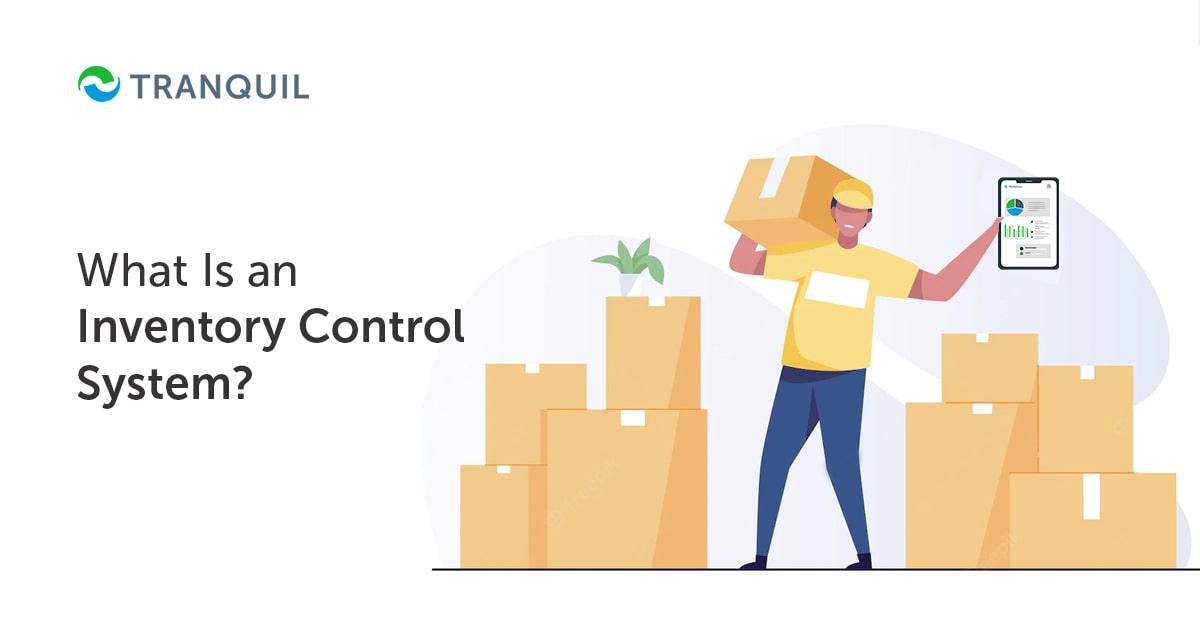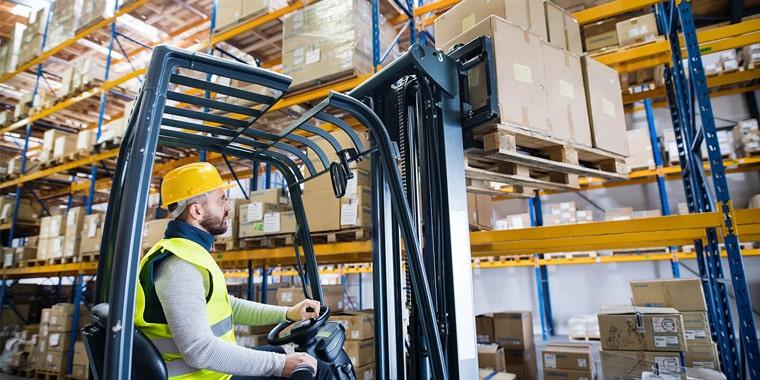
Managing every aspect of a company’s inventory – from purchasing and receiving to storage and turnover, and even reorder – in a system, together makes up an inventory control system.
Of course, the various inventory activities may differ from company to company and may be included in different categories.
However, they need to be executed in a logical sequence so that you have a smooth inventory control system.
ALSO READ: Common Inventory Management Problems and Solutions

Whether you run a brick-and-mortar store or an E-Commerce business, inventory is extremely important – in fact, it’s the biggest asset any business can have.
However, it is essential that you implement appropriate inventory management to ensure you have the required stock at the required time.
Only an accurate stock control system will help you to keep only the requisite amounts of inventory items so that you can enjoy reduced expenses and increased profitability.
It helps in automation and streamlining the process of managing inventory.
A software solution that tracks and manages the inventory of a company across the entire supply chain is called an inventory control system.
It integrates various inventory functions like purchase, shipping, receipt, warehousing, and returns in one single system.
It facilitates automation of manual processes, providing precise details of the inventory in stock, and its location, enabling you to maintain and organize your warehouse inventory properly.
ALSO READ: What is Zero Inventory?

Both inventory management and inventory control handle inventory functions, yet there is a difference.
Inventory control focuses on the stock already in your warehouse, and necessitates the knowledge of what inventory you have and where it is located in the warehouse.
It concerns itself with the maintenance of inventory in good condition and its proper organization so that the expenses are minimized.
On the other hand, inventory management additionally deals with reordering of inventory, and forecasting.
Management includes defining reorder levels of inventory along with the reorder quantity so that you don’t face situations of being stocked out, or carrying excessive stock.
Inventory management makes sure that you have the right quantity of inventory at the right time and place.
Inventory control can be taken to mean a subset of inventory management.
ALSO READ: Common Inventory Management Mistakes to Avoid

As in everything else, evolution and refinement has taken place in inventory control too.
The first systems were nothing more than mere spreadsheets, while now machine learning and AI are making inventory control smarter and more efficient.
There are mainly two types of inventory control systems:
This is a system that keeps tracking inventory in real-time; the moment a product is sold and its barcode scanned, it is deleted from the database, and the new quantity is shown.
The opposite happens when a company takes delivery of products; they are scanned and added to the database.
The database will now reflect the purchase and the count of the inventory will include these goods as well.
The database is centralized, which means that all modules can access it.
This type of system reflects in-depth views of changes in inventory and provides a precise account of stock level without manually counting the inventory.
It can be used by any business regardless of size or industry and is especially useful for stores with several outlets or high sales figures.
This is the more efficient of the inventory control techniques.
ALSO READ: What is Batch Tracking?
In this system, the inventory is physically counted at predetermined intervals; hence, there is no clarity regarding the inventory level till the manual counting is finished.
Now, this can be an impediment to fulfilling customer demands; you may have to physically check your inventory to see if the product is available for sale.
This is because you had last counted the stock a few weeks or months ago, and it is likely that between then and now, whatever you had was all sold, and you are now stocked out.
Apart from that, manual counting of stock is cumbersome, time-consuming, and prone to errors.
Counting dozens of SKUs may work for smaller stores, but for large business, it is not a feasible system.
ALSO READ: What is Inventory Cycle Counting and What are its Benefits?

When a customer comes to you for specific products and you are not able to meet their need, they will be disappointed – annoyed even.
You end up losing a sale and some profit.
You must have products on your shelves or in the warehouse, whenever you receive an order or customer demand.
While this sounds simple, behind it there are a lot of complex activities like purchasing, receiving, shipping, storage, and selling.
These complexities are simplified by inventory control systems, allowing you to focus on your core business.
ALSO READ: What is UOM in Inventory?
Let us examine the main advantages of inventory control:
With perpetual inventory systems, you get updated inventory levels immediately as products get sold, bought, returned, or produced.
Accurate inventory figure received in real time allow you to analyse the flow of inventory to determine effective reorder levels for each item.
This way you can avoid situations of excess inventory and stock-outs.
Thanks to real-time and accurate inventory, you can improve relationships with your customers and employees, avoid backorders and dead stock, and so on.
The supply chain is a complicated mechanism that involves numerous steps – from the time you purchase or manufacture a product till the time that it reaches your customer’s doorstep.
Not only will you be able to meticulously track a product throughout its journey, but you will also be able to identify the hurdles in your logistics workflows with a robust inventory control system.
It will also give you more time to fix problems and inefficiencies.
ALSO READ: Complete Guide on Make to Order vs Make to Stock
When you implement an inventory control solution, you can exercise better quality control by tracking and managing every aspect of your stock.
The longer inventory stays in your warehouse, the greater its chances of getting spoilt.
By ensuring its rotation throughout your warehouse, you can avoid this problem.
You can track the quality of stock received from vendors, as it will help you determine the following:
Knowing these aspects can help identify problems and avoid write-offs.
ALSO READ: What is Negative Inventory and How Can you Prevent it?
When your inventory is not accurate, you can incur expenses in multiple ways.
Not having a product in stock demanded by your customers means cancelled orders and lost sales; moreover, they are likely to buy that or a similar product from your competitors.
If you think of the other side – having too much stock of a product, can cause you to incur carrying costs, taxes, and insurance, along with the risk of shrinkage.
By helping you maintain optimal inventory, an inventory control system can help you save money.
ALSO READ: What is Pipeline Inventory and Decoupling Inventory?
With manual counting and tracking of inventory, you are open to the risk of fraud and mistakes.
However, when the tracking and managing from purchasing to delivery to the customer is done through an inventory control system, you eliminate the possibility of fraud and error.
Today’s customer is in a hurry to get their products, and they are not willing to wait.
With accurate inventory, you can quickly confirm the order and ship it out immediately; however, when you don’t have a proper system in place, you may end up accepting orders for products you don’t have.
You face the risk of backorders or cancelled orders, and eventually, unhappy customers.
They may never return, and spread negative feedback in their circles – this has a cascading effect and can hamper your business.
ALSO READ: What is Storage Cost of Inventory?

There is no doubt that inventory control is critical to ensure efficiency in business operations.
As with everything else, it has its own set of challenges – and the more complex your business, the more the challenges.
Fortunately, the challenges are not insurmountable; you can smoothen them and control your inventory effectively.
Let us take a peek at the most common inventory control challenges that businesses face:
Manual counting, tracking, and managing of inventory necessitate allocation of significant resources.
Employee hours and finances are required substantially; by not prioritizing inventory control, you could end up spending even more time and money later.
In the initial stages itself, you should spend some time to implement a proper schedule of inventory control; this way, things will go smoothly and you will not have to waste much time or money on rectifying problems.
It is also a good idea to include the financial layout for inventory control in your budget.
ALSO READ: Important ERP Modules and Functions
Large businesses with thousands of SKUs, selling via numerous channels, complex warehousing, and fulfilment centres, often find it difficult to have a proper visibility into their inventory.
However, it is imperative that companies have an overarching view of their inventory so that they can perform activities like accounting, sales, and reorders smoothly and flawlessly.
The quality of your inventory can get degraded, and you can even end up with dead stock if you don’t have proper visibility into your inventory.
Inventory control software generates reports that give you enhanced visibility into your inventory; you can get alerts when inventory falls below a certain level.
You can avoid obsolete or dead stock and excess inventory as well. Meet customer demands, and keep holding costs low.
ALSO READ: What is Cross Docking?
With inventory coming in and going out continuously, making errors becomes unavoidable.
Suppliers have to send proper invoices which are verified against purchase orders and actual stock.
If there are any errors or inaccuracies at this stage, it can hamper your inventory control.
Human error can be reduced by optimizing your inventory control software and integrating your solutions into one.
This way, the system will notify you in case any discrepancies between actual inventory counts and the accounts payables are discovered.
ALSO READ: What is ABC Analysis in Inventory Management?
Inventory control software like Tranquil enables the integration of numerous functions of inventory management into one centralized and unified system.
We have already read about the immense benefits provided by the right inventory control software. Now you can see it for yourself – all you need to do is schedule a demo at a time and date of your choosing. We will walk you through our software and show you how everything works.